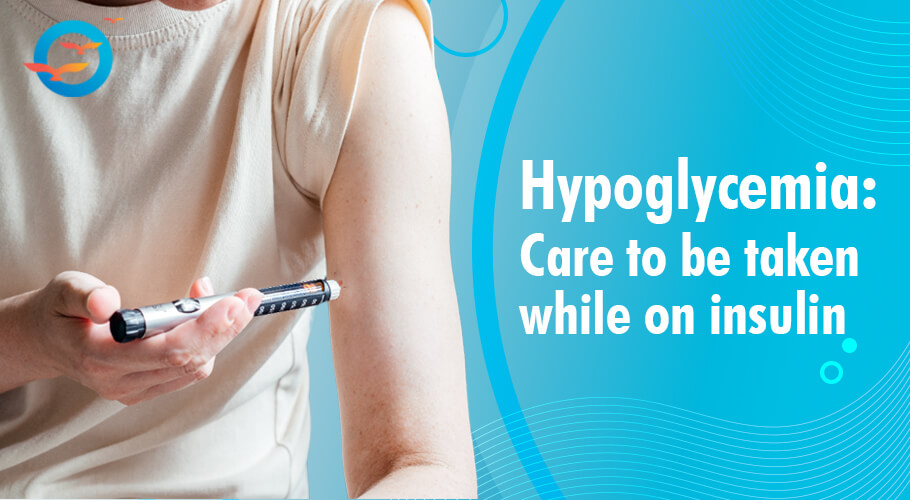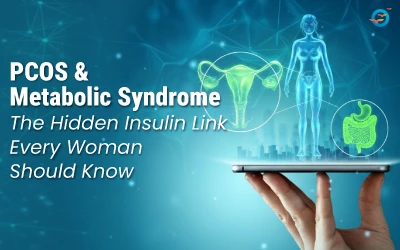Hypoglycemia: Care to be taken while on insulin

When a person’s pancreas is unable to produce sufficient insulin or their bodies cannot use the insulin produced in their beta cells, which are located in the pancreas, insulin needs to be taken externally. This enables the body to properly absorb the sugar from the food eaten and push the glucose into the cells and organs.
For millions of diabetics across the world, insulin is literally a lifesaver. But like any prescription medicine, insulin usage comes with a set of precautions; some of these make common sense others need to be stringently followed to avoid life-threatening situations.
Insulin and hypoglycemia
One of the biggest and most common issues associated with insulin is hypoglycemia—caused by very low blood sugar. This is a potentially life-threatening condition and it is important to know the risks, symptoms, and treatment so you can address it quickly, and, most important, how to prevent it.
What Causes Hypoglycemia?
Hypoglycemia occurs when your blood sugar levels drop below 70 mg/dl. This can happen for a number of reasons, and they vary from person to person.
The most common reasons are: overestimating insulin needed, e.g. taking more than a meal warrants;
- Missing a meal, or having it too late
- Adverse reaction to other medicines
- Over-exercising
Symptoms
Hypoglycemia can occur very fast, and symptoms can range from mild to severe—the only difference being the intensity of the symptoms, which include:
Mental:
- Anxiety
- Nausea
- Drowsiness
- Confusion
- Nervousness
- Inability to concentrate
Physical:
- Unsteadiness, as if drunk
- Blurry vision
- Cold sweat
- Excessive hunger
- Speeded up the heartbeat
- Headache
- Nausea
- Slurred speech
- Weakness
Treating Hypoglycemia
Mild
Mild hypoglycemia can be quickly addressed in a few steps, as below
- First, measure BSL to determine if the person does have hypoglycemia, i.e. glucose level below 70 mg/dl
- If the counts indicate hypoglycemia, give the person a fast-acting glucose drink, like fruit juice, soda, or candy to bring their blood glucose levels up fast
- If hypoglycemia is due to failure to eat or a skipped/delayed meal, ensure the person eats as soon as possible. This will ensure steady basal glucose levels
- Let the person rest in a cool place to give them time to de-stress and the body time to normalize
After 10 – 15 minutes check BSL again; if the person is still displaying symptoms and/or the levels are not yet in the normal range, call for a doctor.
Severe
Given the speed with which hypoglycemia can come on, sometimes a person can be completely unresponsive by the time people around them even realize what is happening. In such instances do the following:
- Put a little honey or glucose gel inside the mouth. But do not put anything hard or relatively insoluble, like hard candy, as it can cause choking.
- Check for a medical id—this is something that all long-term diabetes carry—or should carry—to let others know they are diabetic.
- Diabetics also often carry a glucagon kit. This includes sterile water, a syringe, and glucagon. If this is present, the contents need to be mixed and injected. It will counter a severe insulin overdose. If you are unsure how to do this, call a doctor.
- Medical ID. This is needed so bystanders know that the symptoms have been caused by diabetes. This information should be conveyed to emergency medical professionals.
- In the event of a severe attack, the person must visit a doctor, even if they’re feeling better after treatment.
Precautions
There are some basic precautions that every diabetic must take to stay safe:
- Closely monitor your biomarkers and progress, and keep your doctor informed. This is especially important if you’re on insulin.
Other precautions you ought to take:
- Avoid alcohol, or reduce usage, as it is known to cause very low blood sugar.
- Tobacco use is another risk factor. However, if you decide to quit smoking, keep your doctor informed so he can adjust your insulin dose accordingly.
- If you’re on any other medication—even over-the-counter drugs like aspirin or allergy medicines, discuss these with your doctor.
- Finally, and this is just common sense, never, ever share an insulin pen with anyone else.
- Keep your insulin doses organized, especially if others in your home are also on insulin. Failure to do this can also result in accidentally taking a quick-acting bolus dose instead of a regular basal dose.
- Do not skip or delay meals. Better to take the insulin when you’re at your table.
- Finally, ensure you keep records of your progress. This is necessary to avoid errors in calculating carb-insulin ratios. Or you can use one of the many available apps to reduce the margin of error.
At FFD we take medication very seriously, which is why we have a dedicated doctor assigned to each participant. Every change, be it diet, exercise, or BSL, is monitored 24x7 and medicines tweaked as and when needed. To know more about our diabetes reversal programs Click here.

